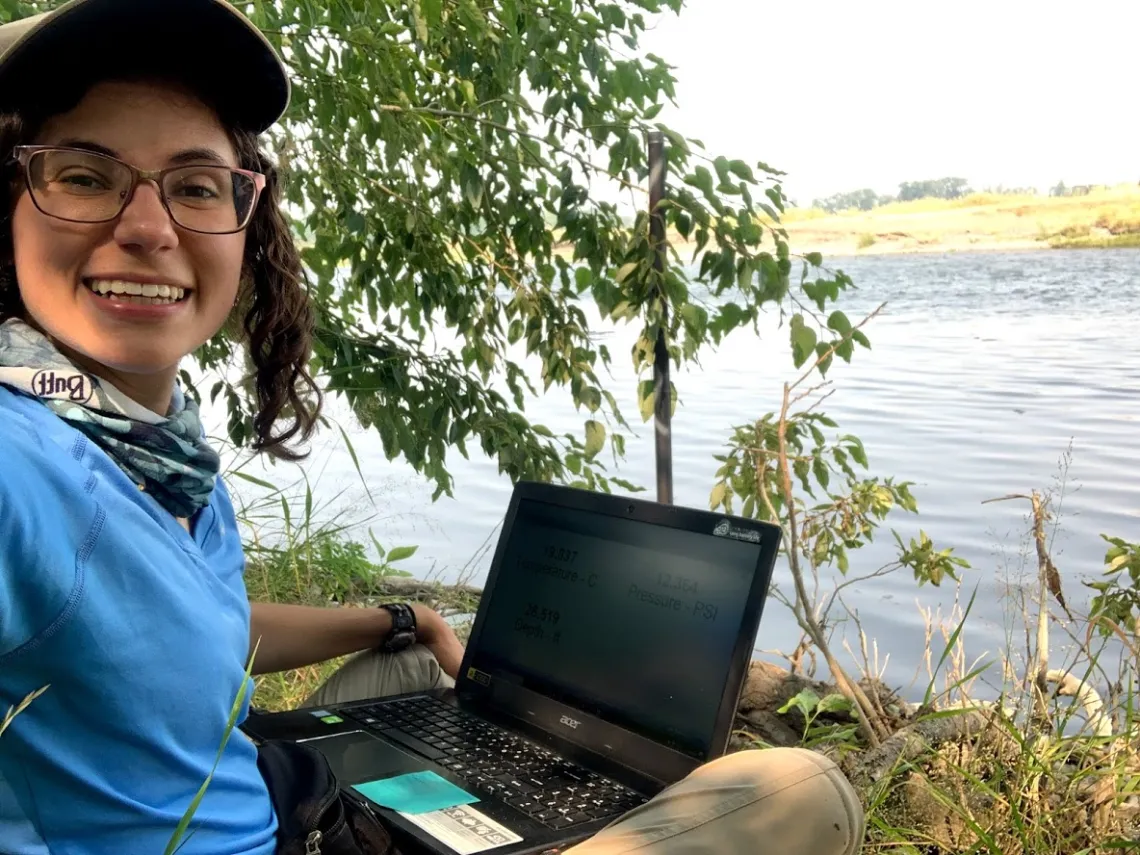How Do I Fit In? Finding My Place and Leaning In to Boundary Spanning

I remember thinking that’s totally me when I read the theme for the 2019-2020 SW CASC Fellowship. Improved understanding of the linkages between the management of headwater ecosystems and downstream resources? That’s totally me. My research focuses on how headwater dam operation and regional groundwater management impact streamflow for farms and fish in the lower reaches of Idaho’s Henry’s Fork watershed. This fellowship felt like the perfect fit and I couldn’t pass up the opportunity to apply.
Back in October, when we were first introducing ourselves and talking about our work, I thought I could pick out how each person could contribute to our research theme. Aquatic ecology, climate modeling, stream geomorphology, wetlands—they all made sense.
But my research, despite paralleling the fellowship theme, has a lot of parts. My work spans from ecohydrology to farmer sociology. While I might describe myself now as an apprentice of water resource management, at the time I couldn’t easily describe my science identity. I couldn’t say aquatic ecologist or climate scientist. And then—despite initially feeling like I was the perfect fit for this project—I found myself wondering, how do I fit in? My research revolves around dam operation. Maybe I’m the dam person? I went with that for a while. Yeah, I’m the dam person. And I let that guide how I contributed to group conversation.
And I should be clear—this mindset was 100% self-imposed. We were encouraged to collaborate and think freely. No one directed us to identify our disciplinary box and to stay in it. In fact, most of my teammates are working outside of their discipline or applying their expertise in ways beyond their individual research. I guess I thought boxing myself in would be… easier? No. I think it was driven by a lack of confidence in claiming my interdisciplinary breadth.
And then we moved away from looking at dams specifically to thinking about climate change and climate adaptation planning. We split into two groups: a “technical group” to project future streamflow and a “stakeholder group” to survey river users and analyze stakeholder documents. When choosing which group to join, I remember saying, “I’ll work with the technical group, but I can be a resource to the stakeholder group as needed.”
Eight months later, in a meeting with the technical group, I’m talking about how we can use the results from the stakeholder group to inform how we communicate our streamflow routing results and Josh says, “Christina, you’re the boundary spanner.” And I nodded. In fact, I had had that same realization
earlier in the week. That’s where I fit in. I ended up contributing to every project subgroup in a meaningful way.
How did I find my place? Through the constant and unwavering empowerment put forth by this stellar group of people, this cohort of fellows. I felt valued. They trusted my expertise, and even sought it out. I remember a colleague identifying with a comment I had made and following up with, “I want to amplify what Christina just said.” I honestly wrote that down in my meeting notes. Of course, I’m not infallible. All my ideas aren’t good ideas. I’m definitely wrong sometimes. But having the fellowship team and our advisory group respect, encourage, and validate my participation has really helped me come into my own and lean in to my place as an interdisciplinarian—a boundary spanner. And for that, I am grateful.

